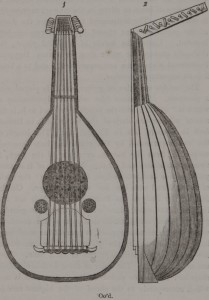#UMSplaylists: Chamber Arts (yMusic Takeover)

Listen Now on
![]()
![]()
In advance of their November 1 performance, yMusic has “taken over” UMS’s Chamber Arts playlist with works of their own discography, including collaborations with Paul Simon, Ben Folds, and Regina Spektor.
Hear the virtuosity and variety of sounds, ensembles, and works by composers featured in UMS’s Chamber Arts Series. This playlist updates with new tracks regularly, so be sure to follow/subscribe on your preferred streaming service!
Preview
Remembering Jessye Norman | Playlist
The entire UMS family is deeply saddened to learn that Jessye Norman, legendary American soprano, five time Grammy Award winner, National Medal of Arts and Kennedy Center Honors recipient, and University of Michigan alumna, who passed away on September 30, 2019 in New York at age 74.

Jessye Norman and the Metropolitan Opera Orchestra, April 30, 1991
We honor Norman’s 39-year performance history in Ann Arbor with a playlist of 10 signature recordings of works she performed with UMS, between her first appearance in 1973 with the Philadelphia Orchestra and her final Hill Auditorium recital in 2012.
Listen now on your preferred streaming service:
Preview
Carl Grapentine’s Sports & Music Playlist (Spotify and Apple Music)

More than 100,000 fans are about to be welcomed home to “The Big House” by the beloved, booming voice of Carl Grapentine, who has been the Michigan Marching Band announcer since 1970 and the official game announcer for Michigan Football since 2006.
Grapentine is also an alumnus of the U-M School of Music, Theatre & Dance, and was a host of Chicago’s WFMT-FM classical radio for 33 years. To celebrate the start of a new season at Michigan Stadium, he’s combined his expertise to curate a playlist of sports-inspired classical works and film scores. Choose your preferred streaming service and learn more about each track below:
About the Music
Honegger Rugby
Arthur Honegger’s musical depiction of a rugby match, composed in 1928 and filled with energy and power.
Mozart “Kegelstatt” Trio,
According to the autograph score, Mozart wrote this delightful trio while playing a game of skittles (a pub game related to bowling) at a local Kegelstatt—a skittles parlor.
John Williams “The Quidditch Match” from Harry Potter and the Sorcerer’s Stone
In the first match of the season, Harry caught the golden snitch giving Gryffindor a thrilling victory. Final score: Gryffindor 170—Slytherin 60.
Arnaud Bugler’s Dream
The French composer Leo Arnaud wrote this for a 1958 recording. But it’s forever associated with the Olympic games ever since ABC began using it for its 1968 Olympics coverage.
R. Strauss Olympic Hymn
Richard Strauss had a complicated relationship with the Third Reich. He composed this for the opening of the 1936 Olympic games in Berlin — the games we remember for Jesse Owens’s heroics.
Suk Towards a New Life
Did you know that the Olympic games once included competition in music composition? This was the silver medal winner (no gold was awarded) at the 1932 games in Los Angeles.
Torke Javelin
American composer Michael Torke wrote this in 1994 on a commission from the Atlanta Committee for the Olympics. Premiered by the Atlanta Symphony Orchestra, it was also played at the opening of the 1996 games in Atlanta.
Puccini “Nessun dorma” from the opera Turandot
When the 1990 World Cup final was played in Rome, three soccer fans — Luciano Pavarotti, Placido Domingo, and Jose Carreras — joined forces to give an outdoor concert. Thus, the worldwide phenomenon of The Three Tenors was born. And the BBC used this aria with its climactic “Vincero” (“I will win”) for its World Cup coverage.
Sousa The National Game
John Philip Sousa was an avid baseball fan. He wrote this march for the 50th anniversary of the National League in 1926.
Horner Soundtrack to Field of Dreams
James Horner’s evocative score for the 1989 film starring Kevin Costner, Amy Madigan, and James Earl Jones.
Randy Newman “Wrigley Field” from The Natural
Randy Newman’s sometimes “Copland-esque” score for the 1984 film starring Robert Redford and Glenn Close.
Debussy Jeux
This ballet by Claude Debussy begins with three characters searching for a lost tennis ball. It was written for Diaghilev’s Ballets Russes with choreography by Vaslav Nijinsky. The premiere took place in Paris in May of 1913, two weeks before the premiere of Stravinsky’s The Rite of Spring.
Elbel The Victors
Composed in 1898 by Michigan student Louis Elbel, in celebration of Michigan’s 12-11 victory over the University of Chicago giving Michigan the Western Conference championship. Hence, “Champions of the West.” The first public performance was given by John Philip Sousa’s band in Ann Arbor in 1899.
11 Virtuoso Pianists to Know in 2019
UMS’s 2019/20 season welcomes back legendary classical and jazz pianists to Ann Arbor, and introduces incredible new talent to our stages. Enjoy listening to our guest artists on our ‘Piano Virtuosos’ playlist, and learn more their upcoming appearances below.
 1. Emanuel Ax
1. Emanuel Ax
In his seventh UMS appearance since 1978, the esteemed pianist joins violinist Leonidas Kavakos and cello superstar Yo-Yo Ma for an evening of Beethoven Trios.
 2. Chick Corea
2. Chick Corea
The jazz piano legend brings together bass powerhouse Christian McBride and drum master Brian Blade for a special concert that revisits their acclaimed Trilogy album.
 3. Aaron Diehl
3. Aaron Diehl
The virtuosic jazz pianist joines forces with vocalist Cécile McLorin Salvant, both returning to Ann Arbor for two intimate sets in the Lydia Mendelssohn Theatre. The program features the Great American Songbook, among other compositions growing from that tradition and history.
 4. Hélène Grimaud
4. Hélène Grimaud
Renowned French pianist Hélène Grimaud makes her UMS solo recital debut, performing music from her latest album, Memory, featuring works by Debussy, Chopin, Satie, Schumann, Sylvestrov, and Rachmaninoff.
 5. Benjamin Grosvenor
5. Benjamin Grosvenor
“Benjamin Grosvenor may well be the most remarkable young pianist of our time,” according to Gramophone Magazine. The electrifying 27 year-old British virtuoso makes his UMS debut this Spring.
 6. Isata Kanneh-Mason
6. Isata Kanneh-Mason
The Royal Academy of Music postgraduate and multiple prizewinning pianist has had a stellar year in 2019, with a new album from Decca, and an international touring schedule alongside her brother, cellist Sheku Kanneh-Mason.
 7. Martin Katz
7. Martin Katz
“The gold standard of accompanists” (The New York Times) returns to UMS for a special two-night program, bringing Hugo Wolf’s 53 songs set to the poetry of Eduard Mörike to life alongside four singers in this season’s What’s in a Song.
 8. Denis Matsuev
8. Denis Matsuev
One of most prominent pianists of his generation, Denis Matsuev returns for his third recital and sixth UMS performance in a program of virtuosic works by Liszt and Tchaikovsky.
 9. Anne-Marie McDermott
9. Anne-Marie McDermott
Adding to a 25+ year career as an concert pianist and recording artist, McDermott has championed artistic leadership roles with the Bravo! Vail and Ocean Reef Music Festivals. She joins the New York Philharmonic String Quartet in recital this season.
 10. Cédric Tiberghien
10. Cédric Tiberghien
An exceptional chamber music collaborator, Tiberghien joins soprano Julia Bullock in the premiere of Zauberland (Magic Land) — a music/theater story of migration from war-torn Syria staged by Katie Mitchell, featuring Schumann’s Dichterliebe performed alongside 16 new songs by Bernard Foccroulle.
 11. Tarek Yamani
11. Tarek Yamani
The Beirut-born pianist and composer taught himself jazz at the age of 19, and brings his Trio to Ann Arbor — fusing the genres of African-American jazz and classical Arabic music.
#UMSplaylists: Journeys
Moon Tunes

In honor of the 50th anniversary of the Moon landing (July 20, 1969), launch into the UMS Rewind archives with 10 moon-inspired works performed over the course of our 140+ year history.
Listen to our ‘Moon Tunes’ playlist on your preferred music service, and discover their respective programs below:
1894
Pianist Vladimir de Pachmann performs Beethoven’s famed Moonlight Sonata, the work’s first of many times appearing on a UMS presentation. The sonata has been on numerous recital programs by legendary pianists, including Rudolf Serkin, Vladimir Ashkenazy, Alfred Brendel, and Ursula Oppens.
View all programs
1950
Finnish composer and conductor Ossi Elokas leads the Polytech Chorus of Finland in his own work, titled “Kuutamolla” (Moonlight).
View program
1959
Italian lyric soprano Renata Tebaldi sings “O luna che fa’lume” (Oh moon that makes light) by Vincenzo Davico in her Hill Auditorium recital.
View program
1976
Tebaldi also performed Bellini’s “Vaga luna che inargenti” arietta in her 1959 recital, which was featured again on programs by Luciano Pavarotti in 1976 and by Cecilia Bartoli in 1995.
View all programs
1979
The Nekrasov Russian Folk Orchestra performs Variations on the theme of the Russian Folk Song “Shining Moon” — a work that was presented again 10 years later in 1989 with the Osipov Balalaika Orchestra of Moscow.
View all programs
1993
American baritone Thomas Hampson sings “Look Down Fair Moon” by Charles Naginski.
View full program
1999
Percussionist Evelyn Glennie and The King’s Singers present Return of the Moon by composer Peter Klatzow.
View program
Jazz legend Bill Frisell and his New Quartet perform an arrangement of Henry Mancini’s beloved “Moon River” from Breakfast at Tiffany’s.
View Program
Schoenberg’s famously dark melodrama Pierrot lunaire is performed for the first time in UMS’s history, with soprano Lucy Shelton. The work has only been presented once again, 10 years later in 2009.
View programs
2000
Broadway legend Audra McDonald performs “Stars and the Moon” by Jason Robert Brown, in her first of seven UMS appearances.
View program
Introducing UMS Playlists on Apple Music and Spotify
Open your ears to new listening experiences:
Now Playing
Journeys
Presenting our global artists featured in the 2019/20 ‘Traditions & Crosscurrents’ series.
Solo Piano
Fall in love with solo works performed by classical and jazz pianists who appear in UMS’s 2019/20 season.
Discover More
Chamber Arts
Discover the virtuosity and variety of sounds, ensembles, and works by composers featured in UMS’s Chamber Arts series.
Highlights include:
- A celebration of young composers by yMusic, featuring works by Caroline Shaw, Missy Mazzoli, Andrew Norman, and other luminaries
- Cellist Sheku Kanneh-Mason, who makes his Ann Arbor debut this Fall
- Max Richter’s global chart-topping “recomposition” of Vivaldi’s The Four Seasons
Jazz Redefined
UMS presents modern jazz masters this season, whose collaborations and unique sound push the ever-evolving genre into new sonic territory.
Highlights include:
- Brooklyn based jazz/funk collective Snarky Puppy opens the season with music from their new album, Immigrance
- Tarek Yamani brings his hypnotic fusion of American jazz and Arabic tarab in his UMS debut
- Multiple Grammy Award winning Chick Corea Trilogy joined by an all-star lineup
- UMS favorites Cécile McLorin Salvant and Aaron Diehl join forces in two sets, improvising on the Great American Songbook
Coming Soon
Sign up for UMS’s weekly newsletter to get notified about new playlist updates and releases. In addition to “guest list” takeovers, UMS will have dynamic playlists that update regularly with new tracks, including:
Up Next
A preview of upcoming performances at UMS, updated the beginning of each month during the concert season.
Renegade
Be adventurous. Open your mind and ears to bold new works — in a safe space to listen.
UMS Rewind
Celebrating 140+ years of UMS’s history presenting legendary artists on the University of Michigan’s great stages.
Playlist: An Intro to Jazz Vocalists

Photo: Cécile McLorin Salvant, who performs with pianist Aaron Diehl in Ann Arbor on February 19, 2017. Photo by Mark Mitton.
What is Jazz singing? Jazz vocalist Cécile McLorin Salvant explains in an interview with NPR just what this means to her. Salvant began her training as a classical singer, she says, but she was drawn to the deeper huskier sounds of her lower register. These are the sounds that jazz singers lean into and the ones that classical singers try to refine. In fact, these deeper sounds are a trademark of one of her early vocal infatuations, Sarah Vaughan.
Salvant says that she frustrated her classical teachers with the breathier tone quality of her middle voice, which is specifically referred to in classical training as the passage between the two registers: high and low. But this breathy tone quality also gives Salvant warmth and style that’s been compared to the qualities of the famous jazz singers that came before here, like Ella Fitzgerald.
That isn’t to say that Salvant’s classical training hasn’t informed the beauty of her tone in a positive way (listen to her crystal clear high register on “What a Little Moonlight Can Do,” below). Rather, Salvant explains that her goal is to sound as natural and unaffected as possible. This combination of training and creative ingenuity has resulted in an emerging virtuoso who proves to be just as capable as the legends that preceded her.
So, jazz listeners in search for a fresh voice: You needn’t worry.
You will find refreshing style, talent, and class in Salvant (she comes to UMS in February!). Though having sung jazz professionally for less than ten years, Salvant has been decorated with top accolades and honors. These include the top honor at the Thelonious Monk Vocal Jazz Competition in Washington D.C., as well as a Grammy nomination for Best Jazz Vocal Album for her debut studio album, Woman Child. She won in that same category with her album For One To Love.
Salvant’s voice has been described quite aptly by Ben Ratliff in the New York Times: “She sings clearly, with her full pitch range, from a pronounced low end to full and distinct high notes, used sparingly […] Her voice clamps into each song, performing careful variations on pitch, stretching words but generally not scatting…”
She applies this thoughtful articulation of sound to repertoire that is just as unique as her performances. She chooses songs that interest her, which are often minimally recorded and unknown. In this way, she is a gift to the jazz world. She breathes timeless life into the genre itself, and Ann Arbor audiences might have witnessed this for themselves when she performed at the 2014 Ann Arbor Summer Festival.
On Sunday, February 19, 2017, pianist Aaron Diehl and vocalist extraordinaire Cécile McLorin Salvant perform together for Jelly and George, turning the spotlight on timeless classics and little-known gems by jazz masters Jelly Roll Morton and George Gershwin.
Ahead of the performance, please enjoy the following playlist that showcases Salvant’s work alongside the work of some of her vocal inspirations.
Playlist: Music of Andalusia
On April 15, 2016, Simon Shaheen brings to life the Arab music of Al-Andalus and blends it with the ubiquitous art of flamenco in Zafir, a program of instrumental and vocal music and dance that renews a relationship with music from a thousand years ago. Zafir explores the commonalities of music born in the cultural centers of Iraq and Syria that blew like the wind (zafir) across the waters of the Mediterranean to Al-Andalus. There it blended with elements of Spanish music and was brought back across the seas to North Africa, where it flourished in the cities of Morocco, Algeria, and Tunisia.

Photo: Simon Shaheen performs on oud. Courtesy of the artist.
To offer a small taste of the music inspiring Zafir, we have compiled a playlist of music from Andalusia, the Middle East, and North Africa. While the performance will blend these three regions and show off the similarities, we’ll separate the three musical styles out here, so that you can hear how these styles have evolved and changed. Take a listen below!
Andalusia
People might think that dance is the essence of flamenco, but in truth, the heart of flamenco is the song (cante). The Arab roots of flamenco run deep, and although much of the history is obscured, it is clear that flamenco grew out of the unique culture in Andalusia. Scholars believe the word flamenco is derived from colloquial Arabic felag mangu, meaning “fugitive peasant.” The word was first used in the 14th century to refer to Andalusian Gypsies, who were called gitanos or flamencos. Soon, the term flamenco came to be applied to their music.
We’ve compiled a playlist of top flamenco musicians in the past century, which includes Camarón de la Isla, Tomatito, Paco de Lucía, La Niña de los Peines, and Carmen Linares.
Israel, Palestine, Egypt
Simon Shaheen, who will be playing in Zafir, is a virtuosic Palestinian-American violinist and ‘oud player who grew up in Israel. Until the early 1990s, Arab music from this region did not have wide distribution, so the focus was on international stars such as Umm Kulthum, Fairuz, and Farid al-Atrash.
The playlist we’ve created includes the musicians listed above.
Tunisia
Sonia M’barek, the vocalist performing for Zafir, is one of Tunisia’s most renowned singers. Her music centers on malouf, a Tunisian style of music that is based on an old Arabic type of poetry called qasidah. It features violins, drums, ‘oud, flutes, and a solo vocalist. The most important structural element of malouf, is the nuba, which was introduced to North Africa by Andalusian Muslims who were forced to leave Spain in the 14th Century.
Here is a playlist of top Tunisian musicians in the past century, which includes El Azifet, Hedi Jouini, Ali Riahi, and Anouar Brahem.
What will you listen for at the performance? Which musical thread interests you most? Share your comments below.
Zafir is at Michigan Theater on April 15, 2016.
Sources
- Tunisia, The Jewel of the Mediterranean. (n.d.) Tunisian Music. Retrieved July 29, 2015 from http://tunisia.oi-dev.co.uk/about-tunisia/culture/tunisian-music
- Noakes, Greg. (1994) Exploring Flamenco’s Arab Roots. Aramco World. Retrieved July 29, 2015 from https://www.saudiaramcoworld.com/issue/199406/exploring.flamenco.s.arab.roots.htm
- Smadhi. Asma (2013) Seven Classic Tunisian Songs. Tunisialive. Retrieved July 29, 2015 from http://www.tunisia-live.net/2013/10/18/seven-classic-tunisian-songs/#sthash.GNvElBIV.dpuf
- New World Encyclopedia. (2013) Flamenco. Retrieved July 29, 2015 from http://www.newworldencyclopedia.org/entry/Flamenco
- Pareles, Jon. (2013). Tradition Performed with a Twist. The New York Times. Retrieved July 29, 2015 from http://www.nytimes.com/2013/05/08/arts/music/sonia-mbarek-at-the-french-institute-alliance-francaise.html
- La Nuvola Bianca. (2015). Malouf, Traditional Tunisian Music. Retrieved July 29, 2015 from http://lanuvolabianca.com/2015/01/10/malouf-traditional-tunisian-music/
- Corrigan, Damian. (2015) Top Five Flamenco Artists. About Travel. Retrieved July 29, 2015 from http://gospain.about.com/od/music/tp/top5artists.htm
4 Youssou N’Dour songs you’re missing out on right now

Photo: Youssou N’Dour. Photo courtesy of the artist.
Have you heard of Youssou N’Dour before? I certainly hadn’t before looking at the season calendar for UMS.
A few facts: Youssou N’Dour is a Senegalese musician who has collaborated with greats such as Sting, Tracy Chapman, and Bruce Springsteen. One of his most notable accomplishments was collaborating with Axelle Red on the official anthem for the 1998 FIFA World Cup. N’Dour formed his own ensemble, the Super Étoile de Dakar, in the 1980s. Playing the Latin-infused dance music that was popular throughout Africa at the time, the group brought their unique sound to Europe and North America on concert tours, and in 2005, he won his first American Grammy Award for best contemporary world music album.
If you’re someone who loves exploring different kinds of music or music that you’ve never heard before, then, like me, you’ll get hooked on this man’s music. Never mind the fact that a lot of his lyrics are in French and Wolof, a language of Senegal, the melodies and infectious beat will sneak their way into your head and stay there for days.
1. La Cours des Grands
This song is for the soccer fans and French lovers – “La Cours Des Grands” is the official anthem for the 1998 FIFA World Cup and was sung by Youssou N’Dour in collaboration with Axelle Red, a Belgian singer/songwriter. I enjoy this song because it has a very inclusive view and aims to target the worldwide audience of the World Cup. This generally cheerful song is a good mood-lifter, and I’ve added it to my morning playlist to get me ready for the day.
2. 7 seconds
Arguably his most well-known song, “7 seconds” reached No. 1 in France and stayed there for 16 consecutive weeks. It also reached the top spots in several other European countries. The song highlights the diversity of the world and the racism that many continue to face today. The title refers to the first 7 seconds of people’s lives, when they are not aware of differences in skin color, ethnicity, or race. The lyrics include these lines:
“and when a child is born
into this world
it has no concept
of the tone the skin it’s livin’ in”
I, as an Asian-American, don’t feel the impact of racism often, but I do experience it once in a while, and this song really speaks to those instances of my experience. Racism is something people learn in their lifetimes, not a natural trait, and “7 seconds” highlights this fact.
3. Immigres/Bitim Rew
On a less serious note, this song was released on one of Youssou N’Dour’s first albums, Immigres, which contained only 4 songs and helped to land him on the international map. I have to admit, the only word I understand in this song is “Senegal,” but I love the beat and listen to it when I cook because the beat is perfect for stirring, and also because the song manages to put a smile on my face without fail.
4. Undecided
This song is by far my favorite. I heard the song at the right moment a few week ago. As I was at my desk, researching Youssou N’Dour’s music, I got sidetracked by thinking about my future. As a junior, and I’m sure other students can relate to this, I have moments of panic while thinking of my upcoming summer and what in the world I’m doing with my life. I had this plan of blowing recruiters away and acing all of my classes, but in reality, I’m sometimes struggling to meet these expectations. I’m struggling to decide what I want to do and how to do it. I’m struggling because I feel like I’m lost and everyone else seems to know exactly where they belong.
This song came on right in the middle of my mini freak out session. It was so different from the other upbeat Youssou N’Dour songs that it caught my attention, and after listening to the calming tune, enjoying its jazzy feel and, of course, seeing the title “Undecided,” I was hooked. I can’t say that this song gave me an epiphany about my life but it did calm me down during my panic, and now when I listen to it, I feel the sense of calmness washing over me. I close my eyes, sit back, and simply enjoy.
Youssou N’Dour and Super Étoile de Dakar perform at Hill Auditorium on November 14, 2015.
UMS Playlist: A Touch of Minimalism
This post is a part of a series of playlists curated by artists, UMS Staff, and community. Check out more music here.
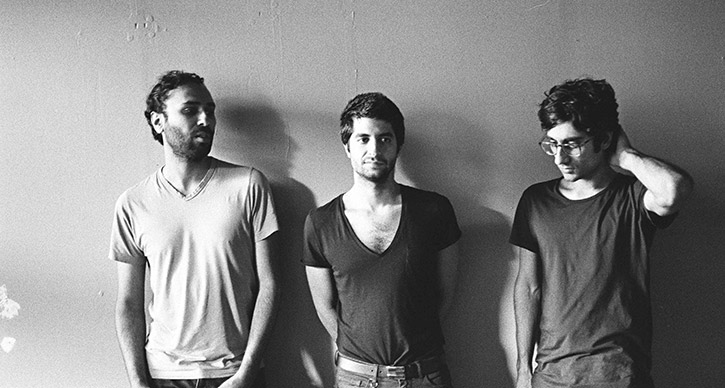
Dawn of Midi perform at Trinosophes in Detroit on January 31, 2015. Photo by Falkwyn de Goyeneche.
Minimalism can be extraordinarily beautiful. I’ve always been a believer of “less is more.” In the right hands, repetition, simplicity, and homogeneous textures of sound can envelop the listener in deeply meaningful and even spiritual ways.
In the playlist below, I’ve attempted to offer a sampling of minimalist techniques in a cross-section of genre and style, from pioneering tape experiments by Steve Reich (“It’s Gonna Rain,” ca. 1965) to minimalist 1990s electronica from the UK’s Richard D. James (aka Aphex Twin) and the Manchester duo Autechre (selected from their seminal 1995 LP Tri Repetae) to Dawn of Midi, a group with a mesmerizing, “electro-acoustic” sound that will perform at Trinosophes on January 31, 2015.
I have also included some surprises: Jason Moran and The Bandwagon’s cover of American-born innovator Conlon Nancarrow (who composed “Study No. 6” for player piano) and downtown New York experimental post-disco songwriter, cellist, and composer Arthur Russell (who died in 1992 at the age of 40 in relative obscurity).
This playlist represents merely a snapshot of some of my favorite minimalist moments. Hopefully it will encourage and inspire a deeper personal journey of discovery.
Please note: These fascinating (and intricate) soundscapes are best experienced on headphones.
What did you think about this playlist? Share your thoughts or song suggestions in the comments below.
UMS Playlist: Our 2014-2015 Season
This post is a part of a series of playlists curated by UMS staff, artists, and community. Check out more music here.
Now that we’ve announced our 2014-2015 season, it’s time to get more closely acquainted with its sounds. Listen along with our Spotify playlist featuring artists on our next season.
Behind the Scenes with Fred Hersch
This post is a part of a series of playlists curated by artists, UMS Staff, and community. Check out more music here.
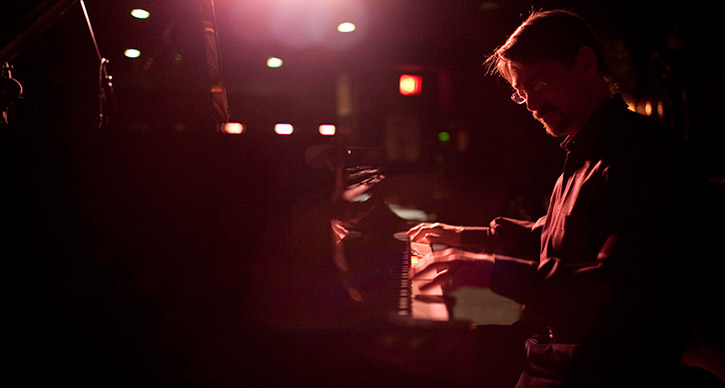
Photo: Fred Hersch performs. Photo by John Rodgers.
The New York Times has praised Fred Hersch as “singular among the trailblazers of their art, a largely unsung innovator of this borderless, individualistic jazz — a jazz for the 21st century.” We’re very excited to host the Fred Hersch Trio in Ann Arbor for two different sets on January 30.
We asked Fred Hersch to recommend some of his favorite jazz pianists.
Fred Hersch: These five pianists are all heavy favorites of mine and not so well-known here in the US. John Taylor has long been Great Britain’s finest jazz pianist – and Gwilym Simcock was his student. “Sweet Dulcinea” is by British trumpeter/composer Kenny Wheeler – with whom I have had the pleasure of playing. I have collaborated with French pianist/composer Benoit Delbecq on a double–trio project “Fun House”: two pianists, two bassists, two drummers and live electronics. He is a master of prepared piano – using mostly wooden sticks of various kinds to elicit otherworldly sounds from the instrument. Bill Carrothers and Kevin Hays are mid-career American pianists whom I follow and always enjoy.
Full list:
Benoit Delbecq: “Strange Loop” from Pursuit
Kevin Hays: “Cheryl” from Live at Smalls
Bill Carrothers: “A Gerkin for Perkin” from A Night at the Village Vanguard
Gwilym Simcock: “These Are The Good Days” from Good Days at Schloss-Emau
John Taylor: Angel of the Presence (CD) Track: “Sweet Dulcinea” from Angel of the Presence
Listen on our Spotify account:
What did you think about this playlist? Share your thoughts or song suggestions in the comments below.
UMS Playlist: Pandit Ravi Shankar: A Retrospective
This post is a part of a series of playlists curated by UMS staff, artists, and community. Check out more music here.
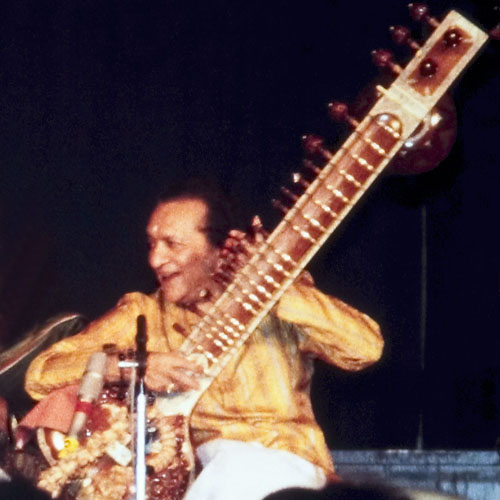
Ravi Shankar in 1988. Photo by Alephalpha.
For many, the name Ravi Shankar is synonymous with Indian music. Indeed, in his nearly 70 year career he performed Hindustani (North Indian) classical music in nearly every corner of the globe, positioning him, in the words of India’s Prime Minister Manmohan Singh, as “a national treasure and global ambassador of India’s cultural heritage.” But his staggering body of work did not only pave the way for other Indian musicians. His innovations and undeniable presence on the global stage helped create the genre we now know of as “world music,” which continues to impact on cultural interaction and the way we experience culture in the modern world.
More than that, though, Pandit Ravi Shankar taught us what it means for an artist to be a true innovator. Even within the historically established tradition of Hindustani classical music, he constantly pushed forward, looking for new directions and new contexts for his music. Still, throughout this process he never lost sight of the tradition from which he came. This is the true nature of innovation: to retain the utmost humility before one’s roots, but with the fearlessness to take risks and try something new. In 2005 I had the pleasure of hearing Pandit-ji speak prior to a concert at Hill Auditorium. When asked what music his was listening to for inspiration, he answered, “I only listen to my own music.” Even then, after 60 years of recording, touring, and composing, he was still evaluating his work and striving for something more. He was 85 years old.
In this small collection from Ravi Shankar’s substantial discography, I have tried to paint a picture of the breadth of his musical life. From his early travels abroad with his brother, Uday Shankar, to his legendary performance at the Monterey Pop Festival. From his ground-breaking Concerto for Sitar and Orchestra to his collaborations with Philip Glass. From his Academy Award-nominated score for the film Gandhi to recordings he made only months before his death. His was a career that not only served as a link between India and the world, but that defined what it means to be a musician on the world’s stage.
Interested in learning more? Check out the program from Ravi Shankar’s performance in Ann Arbor in 1996.
What did you think about this playlist? Share your thoughts or song suggestions in the comments below.
Behind the Scenes with countertenor David Trudgen
This post is a part of a series of playlists curated by artists, UMS Staff, and community. Check out more music here.
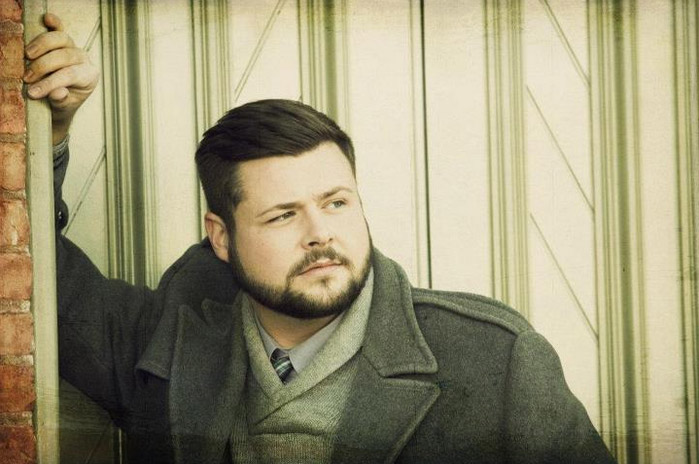
Photo: David Trudgen. Courtesy of the artist.
Countertenor David Trudgen performs in Handel’s Messiah on December 7 and 8, 2013. We had the chance to chat with David about his time in Ann Arbor and about what he’s been listening to lately. Check out his selections in the playlist below.
UMS: We know that you’re a University of Michigan alum. Can you talk a little about your time in Ann Arbor, and what you’re looking forward to in coming back?
David Trudgen: Looking back at my 2 years at Michigan brings up so many fantastic memories, but also reminds me of the opportunities I came to through U-M, like the chances to sing at Carnegie Hall in NYC and at the Kennedy Center in DC. And of course, I loved attending football games at the Big House.
For having as much fun as I had, I also worked very hard. I spent most of my free time at the School of Music, Theatre & Dance, where I was constantly learning new music, and trying to absorb all I could, because I knew this school could give me the tools that I needed to succeed as a musician. I wouldn’t have gotten to where I am without the advice of George Shirley, my voice professor, Martin Katz, my vocal coach, and all of the professors at the U-M School of Music.
I am so excited that UMS has asked me come back to perform as part of this year’s Handel’s Messiah. I remember attending Messiah at Hill Auditorium while I was in school and dreaming about singing this piece on the stage of this amazing building. Who knew that dream would come true? I also wanted to say another special thanks to Dr. Jerry Blackstone and UMS for the invitation. I feel honored to come back to sing at my Alma mater!
David’s Playlist:
Four Sea Interludes from Peter Grimes by Benjamin Britten
Symphony No. 3 by Henryk Górecki with Dawn Upshaw, Soprano
Chasing Pavements by Adele
Make You Feel My Love by Adele
“As with rosy steps the morn” from Theodora by Handel with Lorraine Hunt Lieberson
Piano Concerto No. 1 in B-flat minor, Op. 23 by Pyotr Ilyich Tchaikovsky
Burn by Ellie Goulding
Love Game by Lady GaGa
You and I Both by Jason Mraz
“He has come…. Do not utter a word Anatol” from Vanessa by Barber with Renee Fleming
Let me touch you for a while by Alison Krauss
Brasileiras No. 5 Aria Cantilena by Heitor Villa-Lobos with Renee Fleming
Bohemian Rhapsody by Queen
Sleeping Sickness featuring Gordon Downie by City and Colour
Sex on Fire by Kings of Leon
Hey Mama by the Black Eyed Peas
What Now by Rihanna
Selected tracks on our Spotify playlist:
What did you think about this playlist? Share your thoughts or song suggestions in the comments below.
UMS Playlist: Electronic Music
This post is a part of a series of playlists curated by UMS staff, artists, and community. Check out more music here.
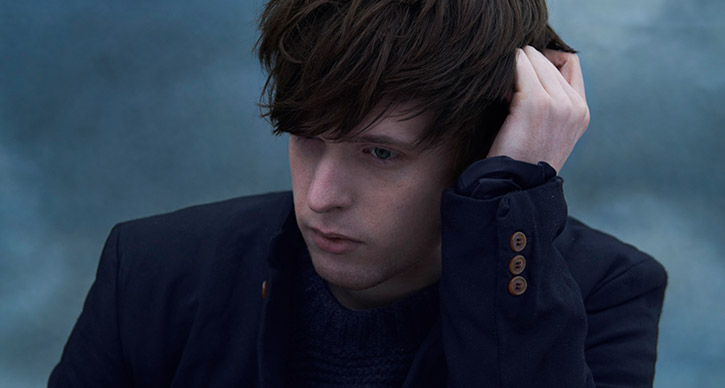
Photo: James Blake (performing in Ann Arbor on November 11, 2013).
The world of electronic music is vast…the component genres and sub-genres and sub-sub-genres too numerous to even begin to catalog (for me, anyway). So…I’m not going to even try to pretend to be qualified enough to provide any sort of formal thesis about the traditions from which James Blake draws. It’s much easier for me to tap into the emotional pulse of an artist’s work or to talk about the “vibes” I get when I listen to a song and then make recommendations for what else might feel similar.
So with that completely non-committal introduction, I offer up this playlist which I call: “Voices of Angels.” Though…the only voice you’ll hear in the Mux Mool track might be a duck??
Playlist:
James Blake – Retrograde
James Blake – I Never Learnt To Share
Sampha – Without
Sampha and Jessie Ware – Valentine
Baths – Miasma Sky
Mux Mool – Baba
Chad Valley – Up & Down
London Grammar – Hey Now
Purity Ring – Obedear
AlunaGeorge – Diver
Toro Y Moi – Say That
Mount Kimbie – Made to Stray
Disclosure – Latch
James Blake – Life Round Here w/ Chance the Rapper
Listen to select tracks on Spotify:
What did you think about this playlist? Share your thoughts or song suggestions in the comments below.



